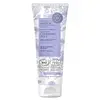What's inside
What's inside
 Key Ingredients
Key Ingredients

 Benefits
Benefits

 Concerns
Concerns

 Ingredients Side-by-side
Ingredients Side-by-side

Water
Skin ConditioningMelilotus Albus Flower/Leaf/Stem Extract
AntimicrobialSodium Coco-Sulfate
CleansingCocamidopropyl Betaine
CleansingLauryl Glucoside
CleansingGlycerin
HumectantSodium Chloride
MaskingCoco-Glucoside
CleansingGlyceryl Oleate
EmollientRheum Palmatum Root Water
HumectantDasiphora Fruticosa Extract
Skin ConditioningSaponaria Officinalis Root Extract
Skin ConditioningSalvia Officinalis Leaf Extract
CleansingAchillea Asiatica Flower/Leaf/Stem Extract
HumectantCalendula Officinalis Flower Extract
MaskingAloe Barbadensis Leaf Juice
Skin ConditioningAngelica Archangelica Root Extract
MaskingSchisandra Chinensis Callus Extract
Skin ProtectingSorbus Aucuparia Fruit Extract
Skin ConditioningLactic Acid
BufferingSodium Hyaluronate
HumectantTocopherol
AntioxidantPinus Sibirica Seed Oil
Skin ConditioningParfum
MaskingBenzyl Alcohol
PerfumingSodium Benzoate
MaskingPotassium Sorbate
PreservativeCitric Acid
BufferingLimonene
PerfumingLinalool
PerfumingWater, Melilotus Albus Flower/Leaf/Stem Extract, Sodium Coco-Sulfate, Cocamidopropyl Betaine, Lauryl Glucoside, Glycerin, Sodium Chloride, Coco-Glucoside, Glyceryl Oleate, Rheum Palmatum Root Water, Dasiphora Fruticosa Extract, Saponaria Officinalis Root Extract, Salvia Officinalis Leaf Extract, Achillea Asiatica Flower/Leaf/Stem Extract, Calendula Officinalis Flower Extract, Aloe Barbadensis Leaf Juice, Angelica Archangelica Root Extract, Schisandra Chinensis Callus Extract, Sorbus Aucuparia Fruit Extract, Lactic Acid, Sodium Hyaluronate, Tocopherol, Pinus Sibirica Seed Oil, Parfum, Benzyl Alcohol, Sodium Benzoate, Potassium Sorbate, Citric Acid, Limonene, Linalool
 Reviews
Reviews

Ingredients Explained
These ingredients are found in both products.
Ingredients higher up in an ingredient list are typically present in a larger amount.
Parfum is a catch-all term for an ingredient or more that is used to give a scent to products.
Also called "fragrance", this ingredient can be a blend of hundreds of chemicals or plant oils. This means every product with "fragrance" or "parfum" in the ingredients list is a different mixture.
For instance, Habanolide is a proprietary trade name for a specific aroma chemical. When used as a fragrance ingredient in cosmetics, most aroma chemicals fall under the broad labeling category of “FRAGRANCE” or “PARFUM” according to EU and US regulations.
The term 'parfum' or 'fragrance' is not regulated in many countries. In many cases, it is up to the brand to define this term.
For instance, many brands choose to label themselves as "fragrance-free" because they are not using synthetic fragrances. However, their products may still contain ingredients such as essential oils that are considered a fragrance by INCI standards.
One example is Calendula flower extract. Calendula is an essential oil that still imparts a scent or 'fragrance'.
Depending on the blend, the ingredients in the mixture can cause allergies and sensitivities on the skin. Some ingredients that are known EU allergens include linalool and citronellol.
Parfum can also be used to mask or cover an unpleasant scent.
The bottom line is: not all fragrances/parfum/ingredients are created equally. If you are worried about fragrances, we recommend taking a closer look at an ingredient. And of course, we always recommend speaking with a professional.
Learn more about ParfumTocopherol (also known as Vitamin E) is a common antioxidant used to help protect the skin from free-radicals and strengthen the skin barrier. It's also fat soluble - this means our skin is great at absorbing it.
Vitamin E also helps keep your natural skin lipids healthy. Your lipid skin barrier naturally consists of lipids, ceramides, and fatty acids. Vitamin E offers extra protection for your skin’s lipid barrier, keeping your skin healthy and nourished.
Another benefit is a bit of UV protection. Vitamin E helps reduce the damage caused by UVB rays. (It should not replace your sunscreen). Combining it with Vitamin C can decrease sunburned cells and hyperpigmentation after UV exposure.
You might have noticed Vitamin E + C often paired together. This is because it is great at stabilizing Vitamin C. Using the two together helps increase the effectiveness of both ingredients.
There are often claims that Vitamin E can reduce/prevent scarring, but these claims haven't been confirmed by scientific research.
Learn more about Tocopherol